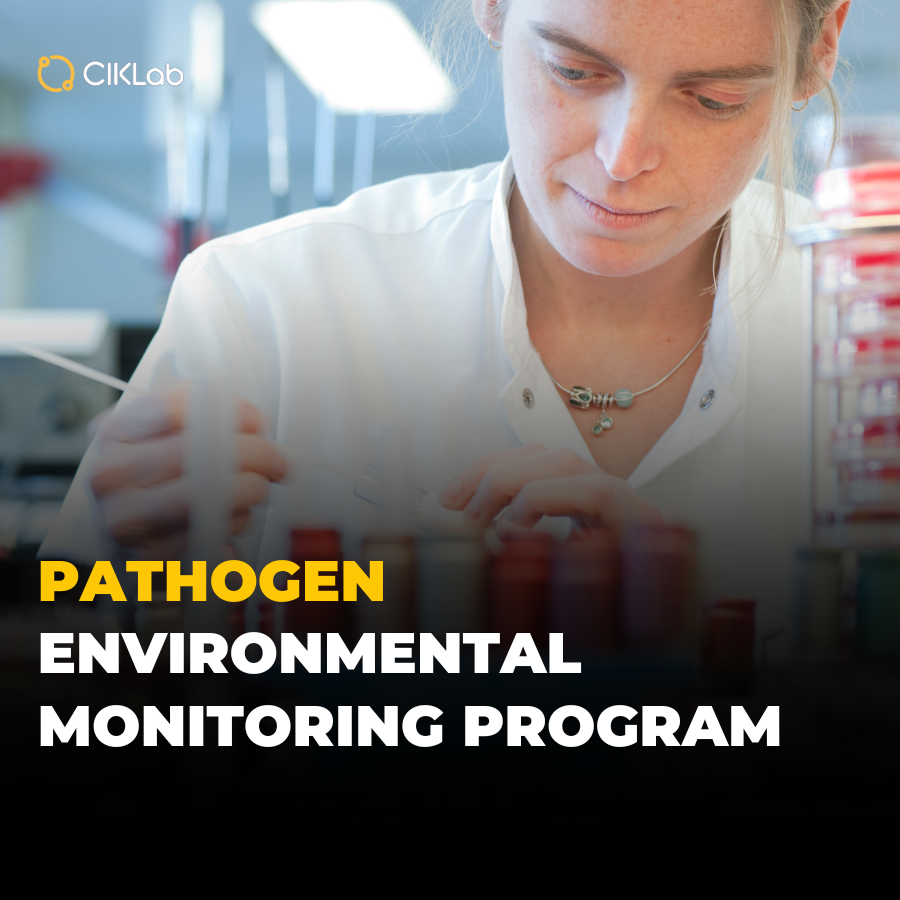A large majority of food companies rely on third party laboratories for their quality control analysis needs. How to choose these laboratories, based on what criteria, and how to create a strong network ?
.png?width=425&height=283&name=BLOG%20CIKLab%20(4).png)
Summary :
1) When should you consider outsourcing ?
2) How to choose subcontracting laboratories? What are the steps ?
3) Establish a partnership with your laboratories !
4) What are the key advantages of outsourcing?
5) Make your subcontractor network a strength !
Over the last few years, quality control services have faced a a strong increase rise in food safety related controls, as well as a wide variety of analysis types to be performed: microbiological analyses, chemical contaminants, authenticity, etc.
There are many analytical service laboratories from all typas, some are generalist and offer a wide range of analysis, while others are highly specialized.
In what situations should you consider outsourcing your analyses ?
There are several scenarios that may lead you to considering outsourcing analyses:
Firstly, the lack of internal resources: If your company does not have the necessary equipment, technical expertise, or qualified technicians to perform the required analyses, outsourcing becomes an essential solution.
Secondly, the need for expertise: Certain types of analyses require specific expertise that may be difficult to develop internally. In such cases, it is preferable to rely on specialized laboratories that have the experience and knowledge required in the field.
Occasional or seasonal needs: If you have occasional or seasonal analysis needs, it may be more cost-effective to outsource the analyses rather than invest in expensive equipment that would be difficult to justify.
Cost reduction: Outsourcing analyses can often be less expensive than conducting them internally, especially when considering the costs associated with acquiring and maintaining equipment, recruiting and training staff, indirect expenses, and above all, the volume of samples to be tested!
Objectivity and independence: Engaging an external laboratory to perform the analyses can provide additional credibility to your results. This is crucial for ensuring regulatory compliance and meeting your specifications, but most importantly, for building trust with your customers!
How to choose subcontracting laboratories? What are the steps ?
Clearly define your needs and requirements. As a food producer, you have an obligation to sell safe products. Even when outsourcinge your analysis to an external laboratory, your are still responsible to selecting the right partner.
First step: what product do you have to control ?
The analysis required to test a product or a raw material indeed depend on that product itself :
- Impact on food safety (based on your hazard and risk analysis)
- Regulatory requirements
- Your quality assurance and specifications
- Customer requirements and specifications.
Second step: Define the analyses to be conducted.
You need to choose the methods, standards, or technical reference frameworks for the analyses to be performed, as well as the specifications (regulatory or internal).
- Carefully choose the standards to rely on (e.g., Escherichia coli can be analyzed differently depending on the matrix, such as milk or meat). If there are specific standards established by organizations like Afnor or ISO for analytes and matrices, there is no question, you should go for it!
- Pay special attention to LoQ* (Limits of Quantification) to ensure they align with the current regulatory specifications.
- Be mindful of the measurement uncertainties in the results. Does the method provide a consistent uncertainty that matches what you aim to achieve?
Third step: Find one or multiple laboratories.
Some may say that a simple Google search is futile, but when conducted properly, you can find valuable information such as generalist laboratories, as well as more confidential or highly specialized laboratories.
The different websites of accreditation bodies (ILAC) provide more information in the technical annexes, allows you to search through the technical annexes of laboratories, where you can find standards, analyses, and techniques that can help identify potential candidate laboratories. For example, for food microbiology, you will find several hundred accredited laboratories. Industry trade associations can provide references for testing laboratories. Additionally, ask your suppliers for testing reports obtained from external laboratories, as this can be a good way to expand your own list.
Fourth step: Select your laboratories
When you have identified your pool of laboratories, it's not over yet!
Does the laboratory perform the analyses you need according to the required standards? They may have implemented faster alternative and validated methods, perhaps even accredited ones.
Request the most comprehensive listing possible so that you can also reference this laboratory for other analyses. Check if the laboratory is accredited by COFRAC according to the NF EN ISO 17025 standard, and which analyses are covered by the accreditation.
Accreditation is undoubtedly the ultimate proof of a laboratory's competence to perform certain tests. In fact, if the laboratory is accredited, it can save you a lot of subsequent verifications.
Does the matrix you are testing fall within the scope of accreditation? Ask if this matrix is known and if it has already been subjected to specific analyses. If not, you may need to validate the method for this new specific matrix.
What is the geographical proximity of the laboratory? How is the logistics of sample transportation organized, and what will be the turnaround time? These points can be very important for microbiological analyses, for example. Proximity allows for sending urgent samples for analysis, and the laboratory may even arrange to pick up packages directly from your location.
What are the laboratory's commitment levels regarding result delivery? Will they align with your release requirements?
How will the analysis results be reported? Request an example of a test report; will the analysis uncertainty, LoQ (limit of quantification), and LoD (limit of detection) be systematically provided? How will the results be presented? Will they be understandable and interpretable by your personnel? Consider, for example, PCDD/F and PCBs!
Does the laboratory subcontract certain analyses? If so, you should be aware of it. Accreditation bodies (like COFRAC in France) require that this information be mentioned at least in the test report.
And finally, what are the prices for the selected analyses? Obviously, cost is important, but be careful not to prioritize this criterion at the beginning of the list!
Fifth step: Reference your laboratories based on the analyses
If your initial study reveals multiple types of laboratories, then categorize them initially into two main groups:
- ISO 17025 accredited laboratories
- Non-accredited laboratories.
We aim to maximize the reliability of the results, don't we?
Next, divide them into two additional categories :
- Generalist laboratories
- Specialized laboratories.
Generalist laboratories, and this is not meant to be derogatory, offer analyses that can cover different industries such as agri-food, pharmaceuticals, or cosmetics. They also provide a wide range of analysis areas, including microbiology, chemical contaminants, and nutritional analyses.
On the other hand, specialized laboratories offer expertise in a specific product type (e.g., Institute of Oils and Fats) or in a particular analysis or technique (NMR, isotopic analysis). If they are accredited, you are more likely to find your specific matrix or analysis covered by their accreditation.
You can categorize these laboratories into three main groups:
- Accredited laboratories that cover your specific analyses under their accreditation.
- Accredited laboratories that do not cover your specific analyses under their accreditation.
- Non-accredited laboratories. These laboratories will require a thorough evaluation and ongoing monitoring from your side. For example, do they participate in inter-laboratory testing programs for certain analyses? Do they have any other types of accreditation or certifications?
Based on your analysis types and associated risks, reference specific laboratories for routine analyses or for expertise, depending on your products and/or matrices.
Establish a partnership with your laboratories !
Before embarking on a long-term partnership, take the time to engage in thorough discussions with the various technical counterparts to address your constraints, matrices, processes, and the regulatory environment in which you operate.
Also, try to find out what the laboratory can offer or how they can adapt if you encounter a food safety non-conformity. To what extent can they support you? Can an expert assist you on-site? It is advisable to clearly express your needs and requirements and establish a contract regarding the outsourcing of analyses.
For a sustainable partnership, opt for regular communication with your subcontractors. While you cannot replace a COFRAC evaluator, you are also subject to requirements and must demonstrate that you have implemented control and verification measures with your service providers.
Establish an annual schedule for audits and visits to your strategic subcontractors.
Evaluate your partner laboratories each year and set key performance indicators (KPIs) to monitor the quality level of each laboratory, such as turnaround times, analytical performance, price changes, availability of technical contacts, and customer service. Hold debriefing sessions with them to implement improvement actions based on your evaluations.
💡 Your subcontracting laboratories are an integral part of your quality control management !
-2.png?width=1200&length=1200&name=BLOG%20CIKLab%20(6)-2.png)
What are the key advantages of outsourcing ?
There are numerous advantages associated with outsourcing quality control analyses:
- Time-saving for release analyses
- Direct access to technical, regulatory, and scientific expertise that may be scarce or unavailable internally
- Cost reduction for analyses. For example, the price of a microbiology analysis can vary by a factor of 10 between internal and external options due to competition between laboratories.
- Flexibility, especially for periodic, occasional, or seasonally-related analyses. This eliminates the need to invest in internal machinery.
- Objectivity, transparency, and the weight of evidence provided by an independent laboratory, especially when its competencies are evaluated and demonstrated
Make your network of subcontractors a strength!
CIKLab enables you to reference all your laboratories, manage the full range of analyses, methods, and techniques to plan your controls and track your subcontracted analyses.
By easily managing a wide panel of subcontractors, you anticipate future needs and demonstrate from now on that your analyses are: reliable, robust, and unbiased.
Turn your analysis results into the strength of your service, a true predictive tool, and a lever for improvement !
* LoQ = Limit of Quantification: The analyte is present in sufficient quantity to be accurately quantified.
** LoD = Limit of Detection: The analyte is present in a quantity too low to be measured accurately, but strong enough to confirm its presence.
©2023 ciklab.com All rights reserved.






